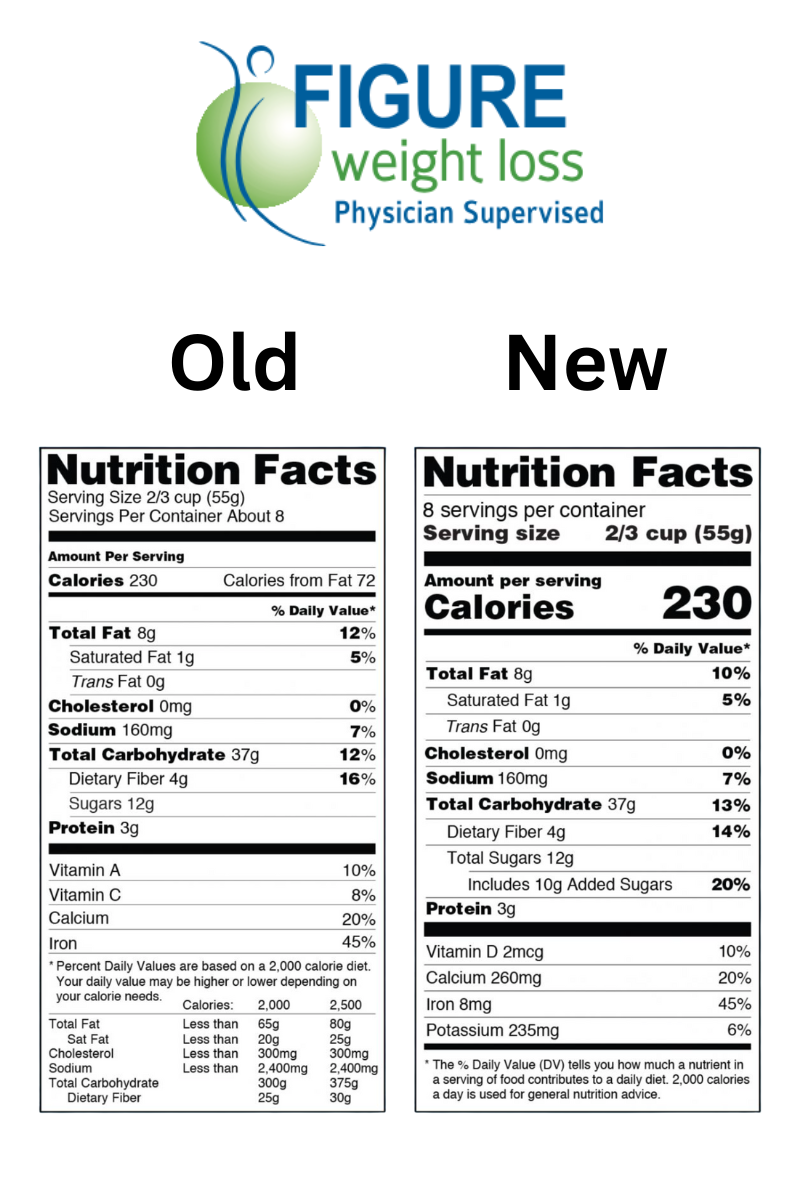FDA has been working on changing the nutrition facts labels on food products and in 2016 the FDA updated the Nutrition Label. Lets take a look at the 206 update and break down the new nutrition label information. The new label aims to help consumers make better informed choices. It highlights certain information better than before and also includes some important added information, too.
Below is an image of the old label on the left with the new label on the right. As you can see, there are some differences but much of the content is the same. It’s still important to read and pay attention to many of the same information as before, e.g. servings, total calories, saturated & trans fats, and sodium.

The FDA has been working on changing the nutrition facts labels on food products, and in 2016 the FDA updated the Nutrition Label. Let's take a look at the 2016 update and break down the new nutrition label information. The new label aims to help consumers make better-informed choices. It highlights certain information better than before and also includes some important added information, too.
As you can see, there are some differences, but much of the content is the same. It’s still important to read and pay attention to many of the same information as before, e.g. servings, total calories, saturated & trans fats, and sodium.
Please check out the blog post about natural sugars versus added sugars written back in January for more information on sugars.
Some information has been taken away while new information has been added based on new scientific findings about nutrition and health. For example, the Calories from Fat has been removed because it’s more important to pay attention to the type of fat (trans, saturated, unsaturated) more so than the total amount. You’ll notice that the Total Fat is still there, and it is still broken down by what type. A big difference you’ll see is underneath the Total Carbohydrate section.
Food manufacturers are now required to indicate how much added sugar there is in a product. Scientific data shows that it is difficult to meet nutrient needs while staying within calorie limits if you consume more than 10 percent of your total daily calories from added sugar, and this is consistent with the 2015-2020 Dietary Guidelines for Americans. Diets high in added sugars have also been linked to an increase in abdominal fat, which is linked to a greater risk of chronic disease.
Please check out the blog post about natural sugars versus added sugars written back in January for more information on sugars.
The nutrients at the bottom have been updated to reflect those that most Americans have difficulty meeting. Aiming to incorporate a variety of foods to include vegetables, lean protein, whole grains, fruits, and healthy fats can help ensure you meet your needs.
Many people struggle with portion control. Often there is more than one serving of a food in a package so that when we eat the entire container, we consume much more than we think. The new label will help make it more clear what one serving is and how many calories, etc. you would be getting if you eat the entire container.
Manufacturers meeting certain yearly sales amount will be required to use the new label by July 28, 2018.
For more information, please check the original article Changes to the Nutrition Facts Label from the FDA.
Written by a certified dietitian at Figure Weight Loss